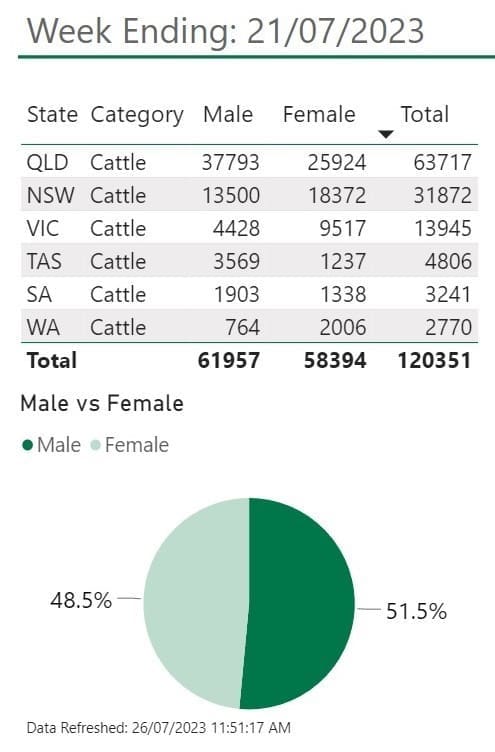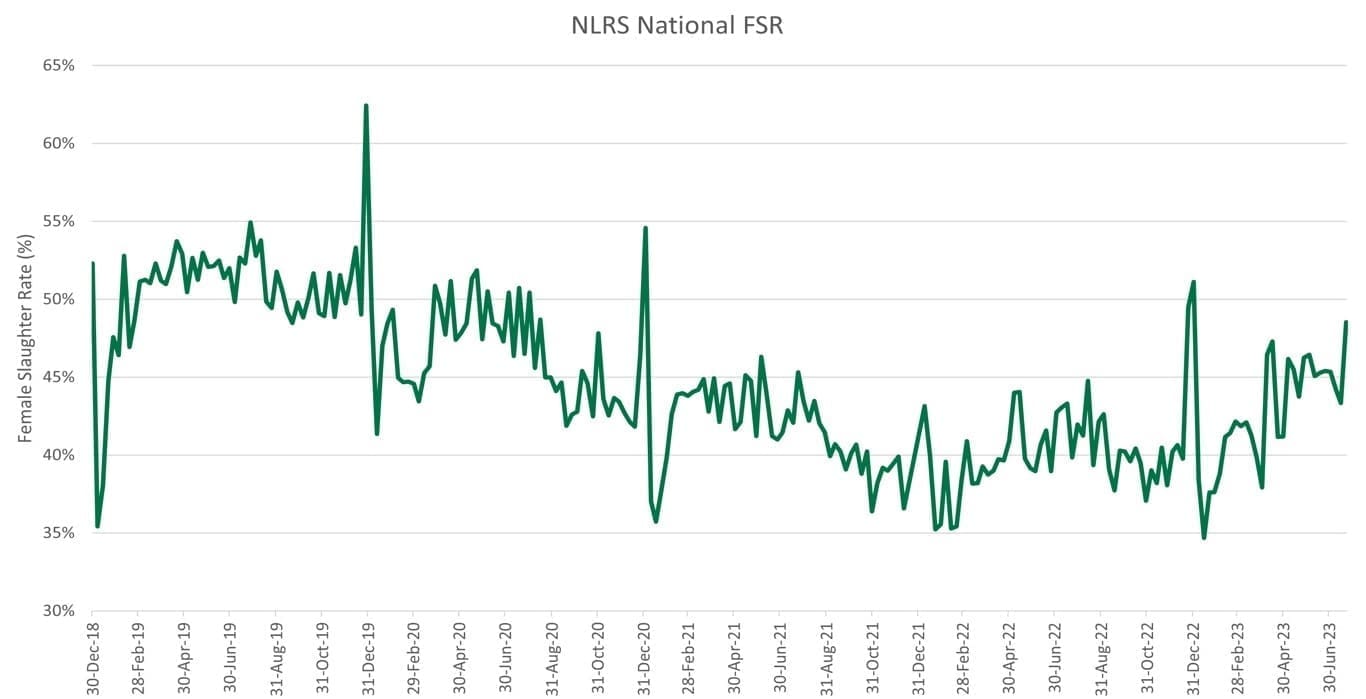THE proportion of female cattle involved in weekly national slaughter has exceeded 47 percent for the first time in almost three years – the theoretical ‘tipping point’ between beef herd expansion and contraction.
Last week’s national kill reported by NLRS showed a female slaughter ratio of 48.5pc – easily the largest seen this year, and the biggest proportional female kill seen since the drought ended (southern Australia first, followed by Queensland) in August 2020.
The trend is captured in the graph published above (disregard the spikes during Christmas week kills in December 2022, 2020 and 2019, when many plants were closed) and the NLRS pie chart below.
There were 58,394 cows and heifers involved in last week’s adult cattle kill across Australia, from a total adult cattle tally of 120,351 head.

As is typically seen, Queensland’s kill last week was well behind southern states for female percentage. That’s because a lot more grainfed export cattle (almost exclusively steers, both southern and locally-bred) are slaughtered in Queensland, and as a result, a relatively higher proportion of females are seen in statistics in southern states.
Last week Queensland’s seven-day kill included 40.7pc females, in a total kill of 63,717 head, while NSW reported 57.6pc female kill, and Victoria a three-year high of 68.2pc females. Because of cross-border feeder and slaughter cattle movements, it is more difficult to make assumptions about herd growth or contraction based on state figures.
Some caution should be noted with the weekly NLRS slaughter statistics, however, as reporting by processors is voluntary, and sometimes is open to question.
A more accurate result will be seen in mid-August when the ABS data is released for the quarter ended June 30. Even that will have some age issues attached, however, being at least six weeks out of date at time of publication.
For much of the past six months, females have represented high-30s to mid-40s in terms of percentage of overall adult cattle kill across Australia, but the graph above shows a clear upwards longer trend this year.
The number has trended higher over the past few weeks, but last week was the first to crack the 47pc tipping-point.
Whether it’s related or not, direct consignment slaughter cows have declined in value over the past month or two. Cows for slaughter in southern Queensland in yesterday’s weekly kill report were quoted at 430-440c/kg, down from limited quotes of 460c/kg eight weeks ago.
Was last week a ‘one-off?’
The key question is: was last week’s kill a ‘one-off’, or does it represent the start of a trend towards herd reduction through larger female turnoff, as mid-winter grazing conditions deteriorate and the threat of a return of El Nino looms.
Kills generally have been larger heading deeper into winter, with the past five weeks averaging well above 120,000 head.
MLA’s mid-year projections update issued last month reported the national cattle herd at its highest level this year since 2014 at 28.7 million head. The growth was on track to increase throughout 2023, resulting in a high supply of both young cattle and finished weight animals to market well into 2024.
According to comments made back in June by MLA market information analyst Ripley Atkinson, a continuation of female retention in northern Australia would ensure the rebuild for this region continues, while the breeding herd in southern Australia would reach levels above long term averages in 2023.

